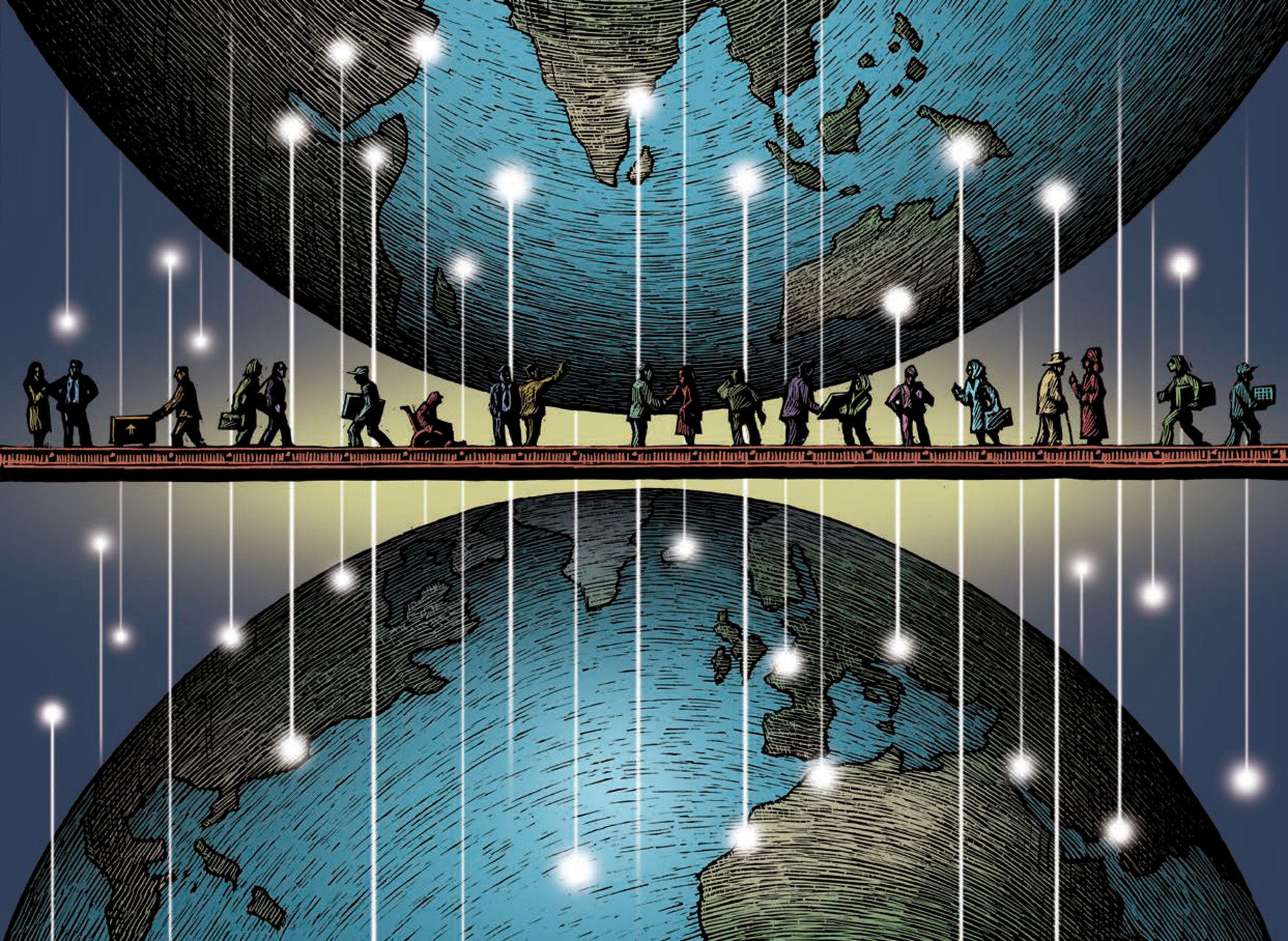In 2018, Norway received 41 000 new immigrants on a long-term or permanent basis (including changes of status), ‑10.6% compared to 2017. This figure comprises 54.3% immigrants benefitting from free mobility, 9.3% labour migrants, 26.9% family members (including accompanying family) and 9.6% humanitarian migrants. Around 3 600 permits were issued to tertiary-level international students and 7 500 to temporary and seasonal labour migrants.
Poland, Syria and Lithuania were the top three nationalities of newcomers in 2018. Among the top 15 countries of origin, India registered the strongest increase (400) and Syria the largest decrease (‑3 100) in flows to Norway compared to the previous year.
In 2019, the number of first asylum applicants decreased by ‑13.5%, to reach around 2 200. The majority of applicants came from Syria (500), Turkey (400) and Eritrea (200). The largest increase since 2018 concerned nationals of Syria (+100) and the largest decrease nationals of Turkey (‑400). Of the 2 500 decisions taken in 2019, 72.1% were positive.
In 2019 and 2020 integration policy initiatives have been prominent. The Norwegian integration strategy – “Integration through education and competence (2019‑2022)” – aims to provide more opportunities for refugees and other immigrants to participate in the workforce and in community life and to reinforce education and training measures.
The strategy measures include vocational training combined with language training and primary education, modulated training tested in several municipalities and ordinary secondary education. Training measures administered by the Norwegian Labour and Welfare Administration will be available for more user groups, including immigrants who need further vocational education at the upper secondary level. In addition, the wage subsidy scheme will be easier to use. Other measures include the extension of the national scheme that offers 20 free core hours per week in kindergarten for low-income families to children aged two and the development of a tool for mapping Norwegian language skills for pre-school children. Better tools for mapping the language proficiency of pupils in primary and secondary education were launched in 2019. Part of the strategy concerns everyday integration, such as the role of civil society and the importance of counteracting racism, discrimination and negative social control.
Since September 2018, training in Norwegian culture and values and training in the Norwegian language have been mandatory for asylum seekers in reception centres. The municipalities must provide the training in a language that the asylum seekers can understand. This amendment to the Introduction Act does not apply to those who are subject to the Dublin procedure or an accelerated procedure.
Following up on the integration strategy, the government has proposed to repeal the current Introduction Act and introduced a new Integration Act. The new act will contribute to more targeted qualification. The duration of the introduction programme will be differentiated to a greater extent, and more people will be given the opportunity to complete upper secondary education within the framework of the programme. The requirement to have completed a certain number of hours of training in Norwegian and social studies will be replaced by a requirement that the individual must achieve a minimum level in Norwegian.
The government has also proposed to raise the requirement for skills in oral Norwegian from level A2 to B1 to become naturalised in the Nationality Act. Amendments to the Nationality Act to allow dual citizenship took effect from 2020.
A Competence Strategy for the Municipal Child Welfare Services (2018‑24) aims to promote greater understanding in the follow-up of children and families with minority background. New provisions in the Equality and Anti-Discrimination Act about effective equality efforts were implemented from January 2020. The duty to work proactively to promote equal opportunities has been broadened to cover also medium-sized private enterprises, i.e. between 20 and 50 employees, provided it is requested by labour unions or employer associations.
Strict immigration control measures to limit the spread of COVID‑19 were introduced from mid-March 2020. Special measures were taken for seasonal agricultural workers to remain in Norway to work and from mid-May to allow also workers from third countries to enter. Gradual reopening of borders continued in June – July. This included allowing entry of third country family migrants. The government provided 456 million NOK to strengthen the introduction programme and the Norwegian language and social studies. From 26 May, a temporary act on adaptations in the Introduction Act to remedy consequences of outbreaks of COVID‑19 came into force. The government also provided 26.6 million NOK in grants to voluntary organisations for distributing information on COVID‑19 among immigrants.
For further information:
www.ssb.no/en/innvandring-og-innvandrerewww.regjeringen.no/en/dep/jd

